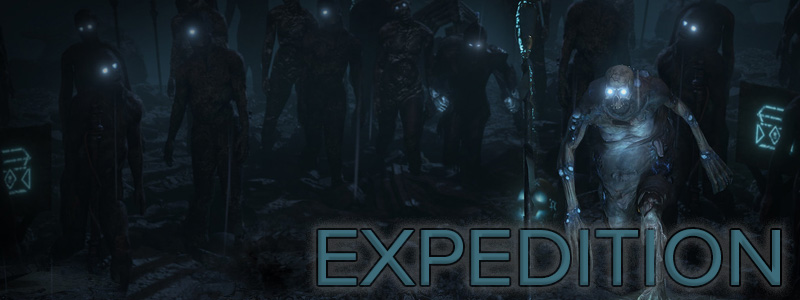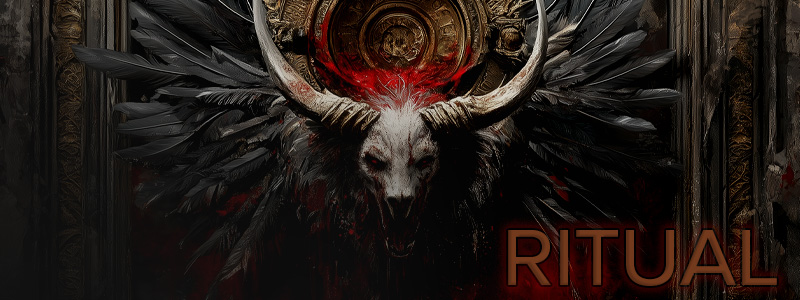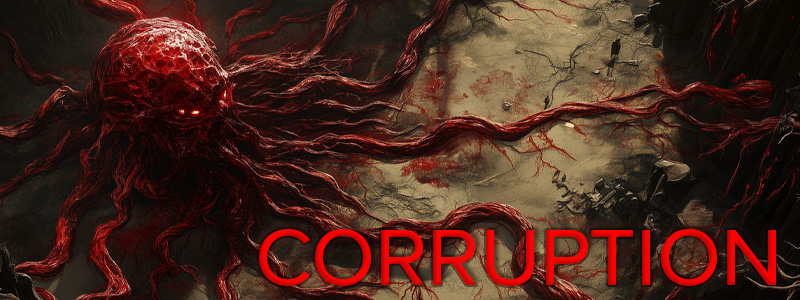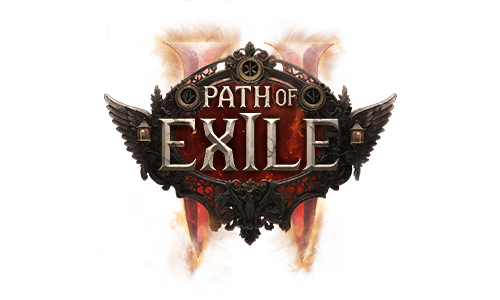
Path of Exile 2 End-Game Mechanics Guide
Discover and compare all Path of Exile 2 end-game mechanics in one guide. Links to detailed guides includedPath of Exile 2 End-Game
All Mechanics Guides & Comparison
Last Update: 04/04/2025
General Information about Path of Exile 2's Endgame System
Path of Exile 2’s endgame begins after completing the Campaign, when players gain access to the Atlas of Worlds. At this stage, players start exploring Maps, which are special instances opened using Waystones found in higher-level areas. These Maps serve as the foundation of the endgame, offering a wide variety of challenges, enemies, and valuable loot.
As players progress through Maps, they encounter various endgame mechanics, adding additional content like unique Monsters, powerful Bosses, and lucrative challenges. These mechanics make each Map run unique, keeping the experience fresh and engaging. Furthermore, players can progressively enhance their Maps by adding more mechanics, increasing both the difficulty and the potential rewards.
With each update, the developers introduce or improve mechanics, making the experience even richer and more rewarding. From epic boss fights to intricate crafting systems, each endgame feature offers a unique path to progress. Understanding how these mechanics work and how they complement each other is crucial to efficient farming and building powerful characters.
Path of Exile 2’s endgame is what keeps players coming back, Patch after Patch. The thrill of discovering new mechanics, optimizing strategies, and grinding for valuable loot creates a dynamic, ever-evolving challenge that captivates the community. Whether you’re a seasoned veteran or a newcomer, mastering the endgame mechanics is essential for maximizing your character’s potential and wealth.
With each Update, the developers introduce or improve mechanics, making the experience even richer and more rewarding. From epic boss fights to intricate crafting systems, each endgame feature offers a unique path to progress. Understanding how these mechanics work and how they complement each other is crucial to efficient farming and building powerful characters.
Below, you’ll find a list of the most prominent endgame mechanics in Path of Exile 2, complete with brief explanations and links to more detailed guides.
|
|
List of All End-game Mechanics in Path of Exile 2

Breach is an end-game mechanic accessible after reaching the Atlas of Worlds. It appears naturally on Maps or can be added using Tablets after completing Towers. Once activated, Breach portals spawn waves of monsters within an expanding circle. Defeating these monsters prolongs the encounter and grants rewards, including Currency, Breach Splinters, Catalysts, and Breach Rings.
During Breach encounters, Clasped Hands can spawn, functioning as loot chests that open when approached. Additionally, the Breach Atlas Passive Tree enhances both loot and monster density. Collecting enough Breach Splinters forms a Breachstone, granting access to the powerful Breachlord Boss, Xesht, We Who Are One. The most sought-after items from Breach encounters include the Controlled Metamorphosis Jewel and the Hand of Wisdom and Action.
Profits
Difficulty
Investment
Sustainability

Delirium is an end-game mechanic accessible after reaching the Atlas of Worlds. It appears naturally on Maps or can be manually added via Precursor Tablets or Instilling Maps with cheaper Distilled Emotions. Once activated, a Delirium Mirror spawns at the start, releasing a mist that covers the map. The mist significantly empowers enemies while also spawning additional Delirium-specific monsters. The further you progress into the mist, the harder the encounters become, but the potential rewards increase, including Simulacrum Splinters and Distilled Emotions.
During Delirium encounters, filling the reward bar by defeating monsters grants progressively better loot. The Delirium Atlas Passive Tree can also enhance both monster density and the quality of rewards. Collecting enough Simulacrum Splinters allows you to assemble a Simulacrum, leading to a high-level encounter with Kosis, the Revelation. Kosis is a challenging boss known for his high damage output, including ice-based attacks and teleport slams. The most notable loot from Kosis and Delirium encounters includes the Megalomaniac Unique Jewel, higher Tier Distilled Emotions for amulet Anointments, and Melting Maelstrom
Flask.
Profits
Difficulty
Investment
Sustainability

Expedition is an end-game mechanic in Path of Exile 2, where players collaborate with the Kalguuran explorers to unearth ancient artifacts. These encounters can appear naturally on maps or be initiated using Logbooks. Upon discovering an Expedition site, you'll receive a set number of explosives to strategically place over marked areas, such as Excavated Chests, Runic Monster Markers, and Remnants. Detonating these explosives in sequence uncovers buried treasures and awakens undead foes, leading to combat scenarios that yield various rewards, including Verisium artifacts and other valuable items.
Collecting Logbooks during Expeditions grants access to larger-scale excavation sites, and within them, you may encounter formidable bosses like Olroth, Origin of the Fall. Defeating Olroth can yield exclusive unique items, such as the Olroth's Resolve Flask, which provides powerful defensive benefits. Additionally, Expeditions offer opportunities to acquire unique currency items used for trading with the Kalguuran merchants or Craft Items with the Recombinator.
Profits
Difficulty
Investment
Sustainability

The Ritual is an endgame mechanic, but you will have the occasion to try it out very early into the campaign in Act 1. Later on, the Rituals will randomly appear on your Maps, or can be added with special Ritual Precursor Tablets to most Maps near the Tower. Your task is to find all Ritual sites and sacrifice the blood of defeated enemies for Tribute, which you can exchange for valuable loot by interacting with the Ritual Altar. Each successive Ritual in the same Map resurrects slain enemies, escalating the difficulty and rewards.
Be mindful that Tribute does not transfer through Maps - you have to spend it all each time. You will also rarely be able to buy out all valuable loot at once. Each Item offered in the Ritual Altar can be Deferred for a small fraction of the full price, ensuring it will appear again in future Rituals for a cheaper price. What you are looking for are Currency Items, Omens, and An Audience with the King, which allows you to fight the final Boss of the Ritual, the King in the Mists.
Profits
Difficulty
Investment
Sustainability

The Arbiter of Ash is the current Pinnacle Boss associated with the overall Atlas of Worlds itself that occupies the mysterious Burning Monolith. You will encounter this construct very quickly on your journey through the Atlas, but to challenge him, you will have to collect all 3 Crisis Fragments first.
To obtain the Fragments, you will need to locate and defeat the respective Bosses in their own Citadels: Count Geonor, Jamanra, and Doryani. The Citadels are scattered across the entire Atlas, so this process can be very hard and time-consuming, but the rewards are worth it. Defeating the Arbiter grants you the special Atlas Passive Tree Points to allocate, as well as gives you a chance to loot valuable Unique Items such as Prism of Belief Jewel or Morior Invictus Armour.
Profits
Difficulty
Investment
Sustainability

Corruption is the latest endgame mechanic introduced in Patch 0.2.0 and when it appears, it spreads to adjacent Maps, forming larger corrupted zones. At the center of these zones, you might encounter a Corrupted Nexus, where you can challenge three new bosses. Defeating these bosses allows you to cleanse the corrupted areas within those zones.
While the rewards, difficulty level, and requirements for attempting corrupted zones are still unknown, there have been leaks hinting at a significant new feature: the ability to Fracture mods on your rare equipment using Fracturing Orbs. We expect these orbs to be highly valuable as they could help reduce the RNG when crafting endgame gear.
Profits
Difficulty
Investment
Sustainability
List of other mechanics available on Path of Exile 2 Maps
In Path of Exile 2, Maps aren't just about fighting Bosses and chasing endgame mechanics - they're also filled with all kinds of optional encounters and features that spice up your runs and offer valuable rewards. These mechanics may not be considered "endgame" on their own, but they can greatly enhance your loot, crafting potential, and overall gameplay experience. Here are some of the interesting elements you might come across in Maps:
-
Essences - Found trapped within shrieking monsters, essences are used for crafting rare items with guaranteed modifiers. Freeing the monster gives you a tough fight, but a useful reward.
-
Strongboxes - These locked chests are guarded by monsters and can be modified with currency to improve their loot. Some even explode or summon waves of enemies when opened!
-
Precursor Tablets - These relics let you plan and customize a small Incursion-like dungeon encounter, rewarding you with gear, currency, and sometimes league-specific items. Read more
-
Rogue Exiles - Powerful versions of other exiles that appear randomly in Maps. They use player-like gear and skills and drop valuable loot when defeated
These encounters add variety to every Map run and offer solid side-rewards that stack up fast over time. Don't overlook them - sometimes they're the best part of the Map!
If you have any other Guide requests, please leave them in the comments below. We are also always open to suggestions and constructive feedback.
Pictures used in this article are the intellectual property of Grinding Gear Games.


